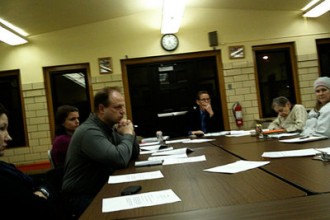A few months back, I had a small tête-à-tête with an op-ed columnist in the Milwaukee Journal Sentinel, who’d written mean things about the school where I teach. I fired back, because I am just that loose a cannon.
But here’s the thing: What got me most upset* about the op-ed was the way the writer used old test scores, which made my school look a lot worse than more recent scores would suggest. Our recent scores show us to be average! I wrote indignantly. (This is MPS we’re talking about, so being MPS-average is not so very good, truth be told.)
In the intervening months, I’ve had time to cool off (opinion writing, like gun purchases, should perhaps come with a waiting period) and I regret both how much I was offended at the mis-portrayal of our test scores and how much effort I put into refuting that. It shouldn’t have been such a big part of my response.
It’s hard to know how to respond otherwise, though, because everything else is, you know, intangible. Unquantifiable. What else do you write about? What else do you hear about about schools after all?
That’s the premise of a fantastic long-form story in September’s Mother Jones magazine (on a single page here). Kristina Rizga spent the 2011-2012 school year “embedded” in San Francisco’s Mission High School. Which is no small thing; Rizga writes, “It’s easier for a journalist to embed with the Army or the Marines than to go behind the scenes at a public school.” (Milwaukee’s education reporters have told me the same thing, about schools all over the area, not just MPS.)
The story follows Maria, our student-protagonist, who went from not speaking “a lick of English” when she started at Mission to college acceptance and scholarships as she graduates. Along the way, we learn that this poised and fiercely proficient young woman is “far below basic” according to the state of California. This is a story almost any MPS teacher can relate to–and a key part of the narrative in Pencils Down, as I wrote some time ago–that of the struggling and ultimately triumphant good student who fails the state test over and over again.
But it’s not just Maria’s story that makes Rizga’s year in Mission so appealing. Rizga spends time with the teachers, teachers who, if they were being judged by their students’ test scores, would also be labeled failing. What she finds instead is a stable of smart, dedicated, self-reflective teachers who care about their students and their practice. (Admittedly, only a handful of teachers show up by name in her story. But she writes about no teachers who don’t care.) Here’s something that, as a teacher, hit home for me (my emphasis):
One day this past spring as I lingered in Roth’s room after class, a young teacher rushed in. “Robert, I’ve been teaching for years, but I’m really struggling this semester.” Her students’ grades were not showing any progress, she said, and they seemed to be losing interest. As the two looked over her grading book together, they realized she was attaching most of the grade to homework assignments and wasn’t giving significant points on the work students did in her class. Those assignments showed that they were learning, but since her struggling students only saw the Fs on their homework, their engagement was dropping.
Roth’s colleague, Pirette McKamey, has been teaching English and history for 24 years and is now the instructional reform facilitator at Mission High. She calls this kind of one-on-one mentoring “mucking in the dirt.” “Every day, there are hundreds of small intellectual conversations all over the school about student work,” explains McKamey. Along with Roth, she also co-leads a committee focused on improving achievement for kids of color, in which faculty review student work and grading policies and read the latest research. “What did the kid write? What did the kid produce?” McKamey says. “That’s all that should matter.”
These conversations teachers have with each other happen in spite of the pressures of No Child Left Behind and Race to the Top or any of the various state schemes to raise those test scores, not because of them. Indeed, the “data” we are asked to review and dissect and parse all the time are test scores–state standardized tests and standardized district tests.
There’s so much more in Rizga’s story–though not as much as I might hope after a year of being embedded; maybe she’s working on a book–that you should read. Anyone who spends any time in some of this country’s (or this city’s) “failing” schools will see the same thing: dedicated teachers, principals who believe in their ability to change lives, and students who rise to the challenge.
* Okay, truth be told, that wasn’t really what got me most upset; I was most upset by the original writer’s implication that if only our school could be free of black or poor students, it would be a good school. Like minority or impoverished students don’t deserve an education! However, re-reading my reply to him, I give more space to the test scores than I do anything else. I still regret that.

